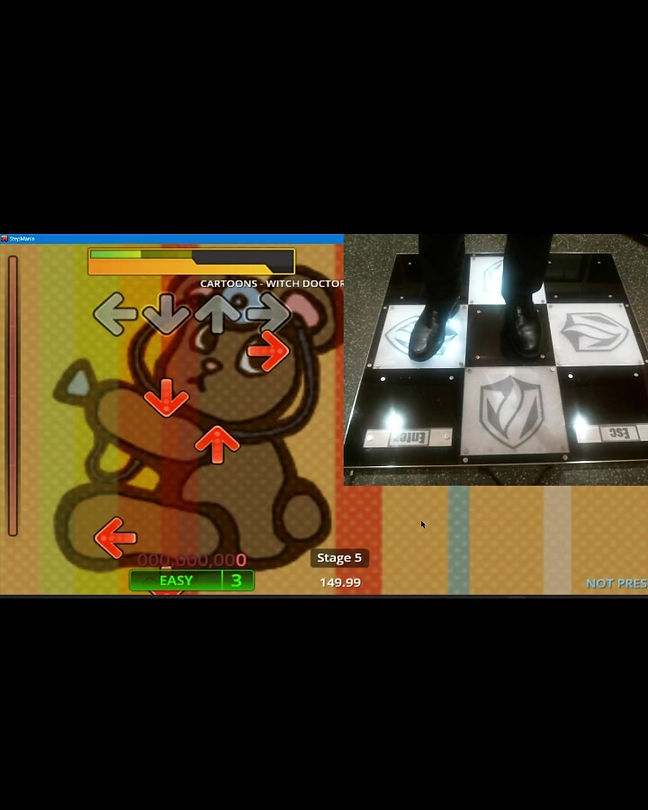Steven Engel: Engineering Portfolio
Senior Design II Table of Contents
Course Description
The Project: Rhythm Game Pad
Undergraduate Table of Contents
Main Table of Contents

Senior Design II: Rhythm Game Pad
Spring 2023, Various Professors
Course Description:
This course involved a semester-long project focused on gaining experience in the various stages of the design process, such as iterating on a design, building a prototype from the design, testing the prototype, turning the prototype into a final product, and continuously documenting many aspects of the product. It also taught many important industry skills like public speaking (in the form of oral progress reports), technical writing, and working in a multi-disciplinary team.
The Project: Rhythm Game Pad
Our group of three computer engineers and three mechanical engineers was tasked with building a durable, inexpensive, mobile, and aesthetically pleasing pad that would interface with PC rhythm games, such as StepMania. Additionally, the pad had to run off of only 1 USB cable to the computer in terms of power. To do this, we focused on five main subsystems, with the electrical systems using an ESP32 microcontroller as the "brain" of the operation:
Structural- steel supports for the outside of the pad, with an MDF base.
LEDs- flash when any of the arrows are stepped on, or enter an idle mode where the lights flash pseudorandomly through predefined patterns, emulating an arcade machine.
FSRs (Force Sensing Resistors)- When stepped on, the microcontroller was used to read the analog input; when it fell below a calibrated threshold value, a digital output was sent into the gate of a transistor, taking 5V from the USB connection to power the lights for extra brightness.
Step Squares- the step squares were created with layers of black polycarbonate placed on top of the FSRs for extra durability on the squares that were stepped on the most (up, left, right, down).
Non-Step Squares- the other squares had a top layer of acrylic to distinguish them from the step squares.
I conceptualized and programmed the LED "idle arcade mode", calibrated all of the threshold values, built the original electrical circuitry on a breadboard (before we transitioned it to a perfboard for more durability), and assisted in many other endeavors (a lot of soldering, assembling the MDF base, documentation, presenting, creating a promotional video, etc.). Below, you can also see a brief clip of the pad functioning and me play-testing it!
